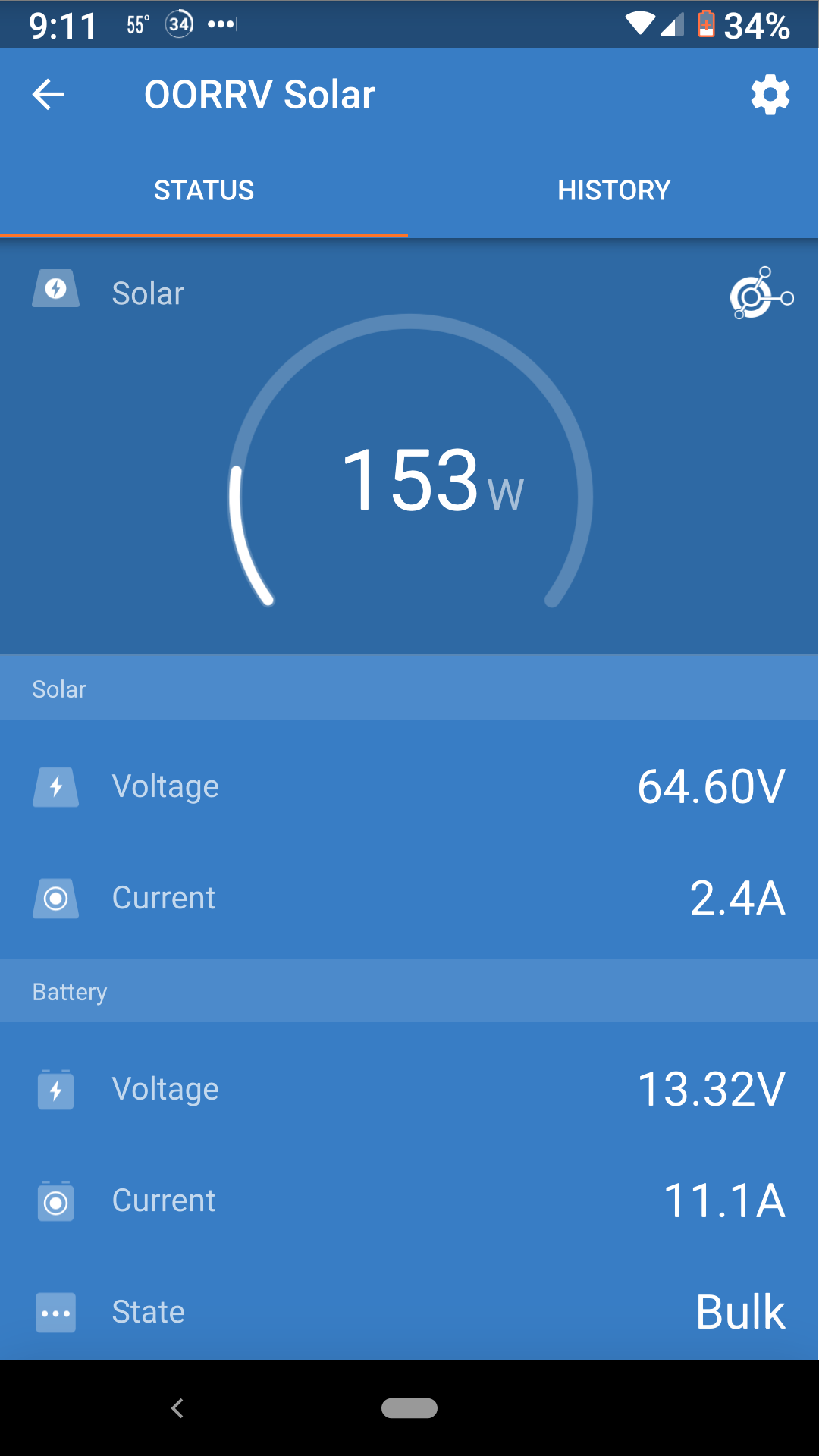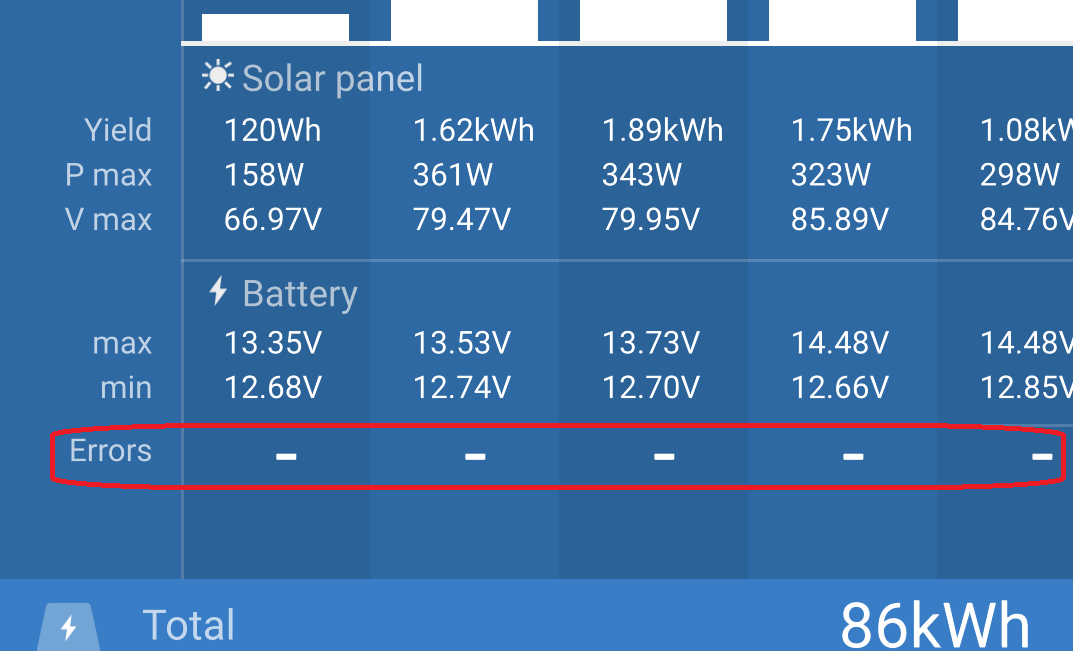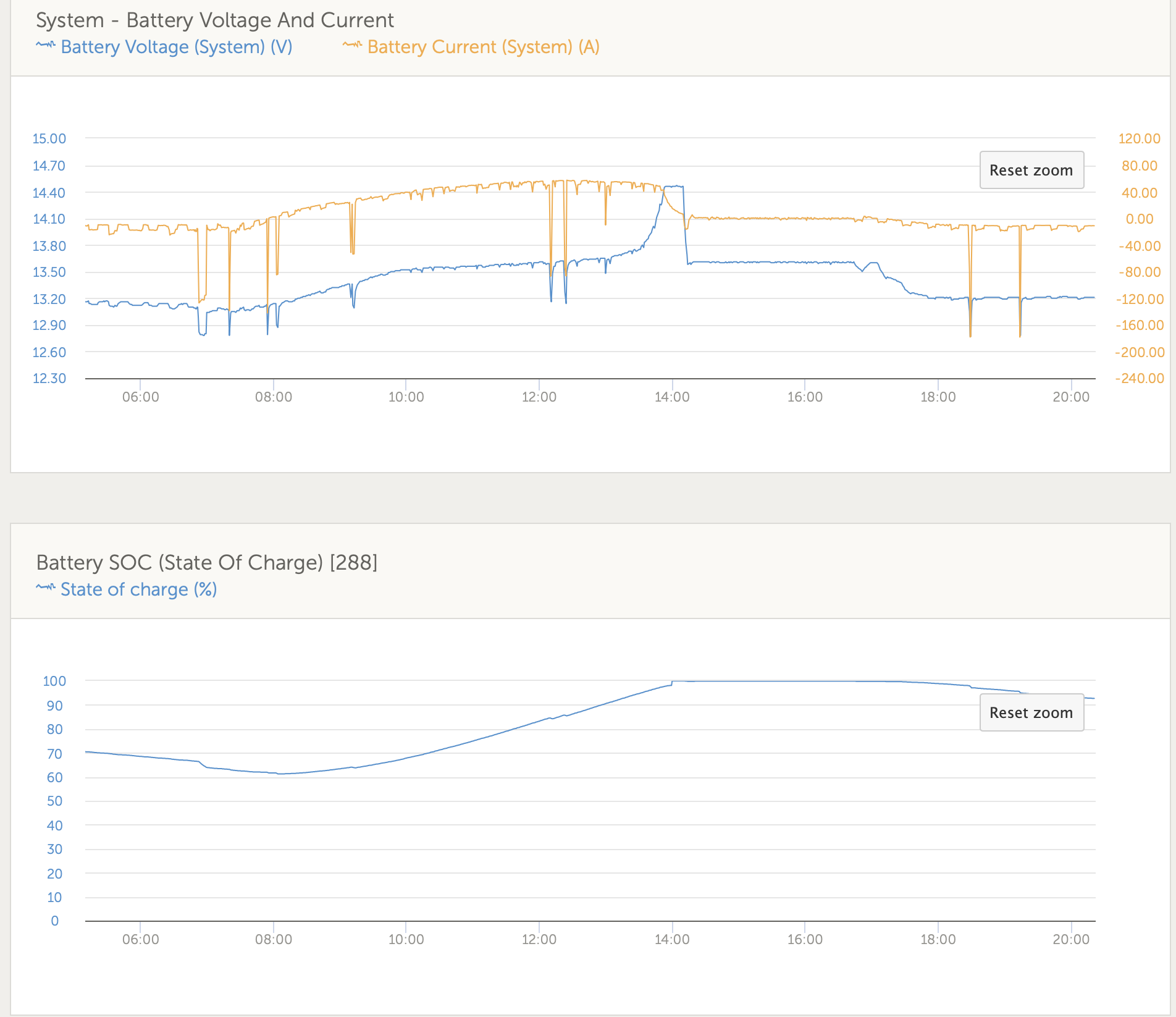I have a new SmartSolar 150/60 MPPT controller that appears to be functioning correctly while charging my 3 Battle Born 100Ah batteries. The output voltage while in bulk mode appears to be 13.6 volts, and I believe it should be around 14.4 volts. Also the bulk light is blinking about every 3 seconds all the time which indicates I don't have enough voltage coming in from the panels. I've measured the input voltage and it typically reads 80 to 85 volts while charging.
Is it possible that I have something set up wrong. I believe the dial on the controller is on setting #2, but I am over-riding that through the bluetooth app to the suggested lithium settings from Battle Born.





